Media | Articles
These 4 iconic classics just aren’t attracting young buyers

Want a better understanding of what’s driving collector-car values? Sign up for the Hagerty Insider newsletter.
If you’re a regular reader, you’ve probably noted that we frequently reference demographic data—in particular, age. That’s due to both supply and demand. We have a surfeit of information on enthusiasts’ ages courtesy of Hagerty’s insurance call centers (“how old are you” is one of the standard questions an agent will ask in order to give you a quote on insurance). And we know, from comments on Hagerty media articles and chatter at practically every car event, that many enthusiasts worry whether the next generations will keep our hobby going.
Generally, the story is an encouraging one. Our data show younger enthusiasts are increasingly interested in collector vehicles and in particular tend to appreciate the very same vehicles their parents and grandparents loved.
Of course, this interest is fortunate for the hobby—if every enthusiast sought out solely the new cars of their youth, tens of thousands of Ford Model Ts and Model As (along with countless other models) wouldn’t still be on the road.
This phenomenon doesn’t extend to every classic car, however. Based on our policy quote data, some vehicles face flagging interest among younger collectors—and we’re not just talking about fringe models, either.
Marketplace
Buy and sell classics with confidence
Before diving in, we should remind you that age is just one of several factors that enable us to accurately track collector marque and model trajectories. Breaking down enthusiasts by generation admittedly lumps together a broad swath of automotive interests—a Gen-Xer born in California in 1965 may well have different collector influences and priorities than one born in Idaho in 1979, for example. That said, parsing interest in vehicles by collector age group has proven to be an effective indicator of the potential future health of that vehicle’s valuation.
1961–74 Jaguar E-Type (series I, II and III)

For all three series of E-Types, a full 80 percent of quotes are from enthusiasts born before 1965.
Cost likely has something to do with that—older enthusiasts still tend to dominate interest in more expensive vehicles, and the series I (1961–7) E-Type, the most popular model, is reliably a six-figure car, per both the Hagerty Price Guide and the values callers assign to their cars when they call us ($148K, on average). Yet the series II (1968–71) and the V-12-powered series III (1971–4) tend to be more attainable and still get relatively little interest from younger collectors.
1948–65 Porsche 356

Porsche as a whole is one of the healthiest brands in terms of its appeal to enthusiasts of all ages, thanks largely to the longevity and timeless appeal of the 911. Yet that doesn’t seem to extend to the car that started it all, the 356.
Nearly 70 percent of the people calling us about insurance on one are born in 1965 or earlier. As with the E-Type, cost might be a factor. The earliest 356s (those built between 1949 and 1955, or “pre-A” in Porsche-speak) can hit seven figures, and even the later models (1963–5 356C) tend to be worth more than $100K. Yet no one would call the 964-era 911 Turbo an affordable car these days, and Gen-X and younger generations reliably make up close to fifty percent of interest in them.
1946–55 MG T-series

The MG aids in demonstrating that interest (or lack thereof) in a car is not simply a function of price. The MG series helped popularize the sports car in the United States after World War II and has always been an affordable gateway to the joys of open-air backroads driving. The 1950–3 TD, the most popular of the T-series MGs, can be had in good condition for around $20K. And yet 88 percent of quotes for these MGs are from enthusiasts born before 1965.
There are a number of factors here, including the fact that MG hasn’t sold a car in the United States since 1980. Yet the most salient reason for the MG’s lack of popularity among younger enthusiasts is probably the Mazda Miata, which is even less expensive (for now), considerably newer, and has the 1990s vibes that Millennials in particular seem to dig.
1963–7 Chevrolet Corvette

You might expect Corvettes to dominate this list but, for the most part, you’d be wrong. Late third-generation (or C3, 1974–1982) and fourth-gen cars (C4, 1984–1996) tend to be quite popular among younger collectors.
Yet for the 1963–7 C2, interest is indeed graying: Some 74 percent of people calling us about them were alive when the car came out. These cars aren’t MG-cheap, but, leaving aside early split-window cars and ultra-rare variants, neither are they E-Type expensive. People calling us for a quote on a C2 state an average value of $83K, about sixty grand less than for early E-Types.
The outlook isn’t the same for all American cars of this era. The 1961–9 Lincoln Continental (29 percent of quotes come from those born prior to 1965), 1960s Chevrolet Impalas (36 percent), the 1965–8 Ford Mustang (41 percent), and 1949–67 Volkswagen Beetle (36 percent) all have a majority of quotes from Gen-X and younger enthusiasts.
What’s to come?
What are the potential implications for those vehicles that don’t have much youth appeal? In the short term, we don’t see much risk. People from the baby boomer or earlier generations still control nearly 65 percent of the wealth in the United States and are extremely active in the collector car market.
If these trends continue over the long term, however, affected vehicles may see diminishing demand and values that don’t keep up with inflation or decline.
That won’t shake any of those cars from the firmaments of classic-car legend, and it won’t make them any less fun on your favorite road. Just the same, it never hurts to head out to local events, let the kiddos sit in the car, and take them for a spin.
***
Check out the Hagerty Media homepage so you don’t miss a single story, or better yet, bookmark it. To get our best stories delivered right to your inbox, subscribe to our newsletters.
Via Hagerty Insider
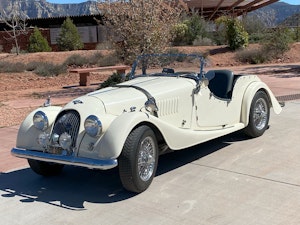
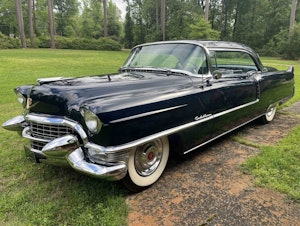

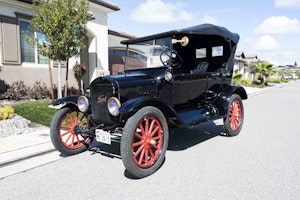
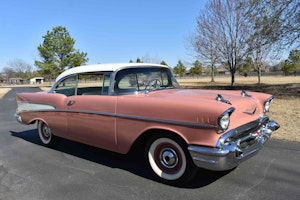

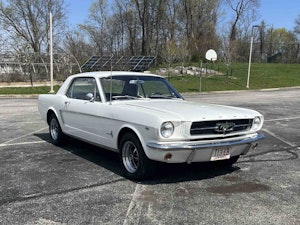
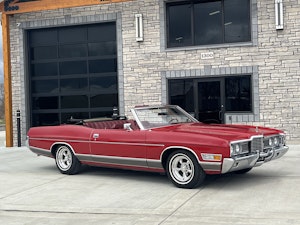






They can’t want what most of them have never seen. They may not have grown up with them but how often are they seen as opposed to what they are exposed to every day. I’ll bet there’s a large number that have never seen one or only a picture. Most are locked away and yes the price does also have an effect
I agree with almost all the others—WHO CAN AFFORD ONE–I have a muscle car–72 Javelin SST—
and a British Roadster. 1960 TR-3a—both are still affordable and both seem to go up in value every year.
The one that gets the most attention when cruising down the street is the is the British Roadster.
There is just something about the body styling that the young kids dig and the foggies like me.
MG’s are a classic up till the MG-B. And Triumphs are classics up till the TR-4s (but they are pretty cool to)
so are the spitfires–but the TR-7 and 8s that is a different story,.
Most of society is totally intimidated by anything mechanical. Like any othwer hands on hobby the old car hobby is dying a slow death. The last few generations want nothing to do with anything they can’t do from there cell phones. My advice is to just enjoy it while it lasts
I’m stating to realize just how fortunate I have been.
I purchased my 59 Porsche 356A sunroof coupe in 1976.
My neighbor (at a remote and clandestine location) had disassembled it in an attempt to restore it (without his wife’s knowledge.) His wife was getting suspicious as to what was going on so he decided to sell it rather than explain the 356 to his wife. As I was in college at the time, a “loan” of $1000. (from very understanding parent) secured me a “complete” Porsche. (Disassembled but complete) I spent the next 6-7 months, weekends and breaks, attempting to put it all back together. (with help from friends) At first, I was wondering what the heck was I thinking, but over time the puzzle stated to take shape.
The previous owner saw fit to repaint the 356, “METAL FLAKE ORANGE”. He also bondo’ed in the sunroof.
Weeks of stripper and sandpaper later solved the crime. (sunroof works great!) The new paint “Barcelona Brown” with biscuit leather interior is not as polarizing as the metal flake orange.
I still own the 356. It has been a joy to drive and is very reliable. (It was so reliable that my father drove it to his office every day while I was in college) I told my wife that I want to be buried in it when I’m gone.
Her response was “Forget that, She’s bringing a date to my funeral!”
The money thing is irrelevant. Miuras and any Enzo era Ferrari would also be excluded if money were the issue. Posters of these cars did not grace bedroom walls for younger generations, so the initial impulse for most collectors for these is absent. However, just as those of us who have grown up have learned, timeless design is still compelling, so people born after WWII bought Duesenbergs, Bugattis, Talbot-Lagos, Bentleys and Alfas.
The money thing is irrelevant? Seriously? Read the rest of the comments.
Cost and lack of financing. You can buy the C8 with 5,6,7, contacts, classics/collecitbles usually come with a single payment book
I dont blame them or anyone for not wanting any 63-67 vette in its original state, they have power but handle like crap, drive all over the place, etc. I would only consider a good restomod version of any of those cars so they can handle and perform like they should.. Thats why restomods get the big bucks and are popular..
I’d walk past anything for a Jaguar E-Type. Should have gotten one back in the 70’s……sigh….
This is a complicated topic. I’m 74 and have always been a car enthusiast. Older classic cars = expensive cars. Parts are hard to find and can cost ridiculous amounts of money – a friend of mine recently completed an NCRS restoration of a ’67 Vette L71 big block; he’s got over $100 grand into the car just in the restoration alone; it cost him over $200 for an <<>> wingnut for the air cleaner assembly. And just TRY finding 105 octane leaded gas today. This car is too nice, too rare and too expensive to risk among today’s crazy people on jammed highways and it is disappointingly slow when some guy in a totally stock Hellcat cruises up alongside and laughs at you. These older cars, no matter how cool and exciting they were to us forty years ago (and they were!), are now basically self-propelled memorial shrines reminding us of “the good old days”. And so they should be, as you make that long summer weekend ice cream cruise with your honey ….. if you can afford it.
Just saying.
All great comments here. I need some advice, please! I have a fabulous Miata and a beautiul Alfa Romeo, but looking for change. I’m a boomer on a budget. (1) What small sportscar do you recommend as a daily driver (Long Island) for less than $40 K? I love vintage; hate new cars. (2) I really want an affordable Shelby Cobra replicar, probably a Daytona, for the trunk. But my garage told me that 2 customers had trouble registering these replicars here in N.Y. State. Comments, please? Thanks!
Monika , Try researching Triumph TR 6 / Spitfires or even TR8 all affordable compare to muscle cars.
lots of available cheap parts / easy to work with / handles great for a vintage car & just unbelievably – blast fun to drive. when Miata came out it was the newer version of British Triumph Spitfires / MGB’s
Hi Monika,
Have you considered a Honda S2000?
Or perhaps a BMW Z4 (which IIRC you can get with a retractable hardtop – handy in winter). There is also the Z3 ….. although I personally consider it a bit too “cozy”. I have a feeling you will have a hard time beating that Miata you already own … 😉
Needs to be on GTA game for todays youngsters
I’m 62 – these days young or even older age 30’s – 40’s . they don’t even know how to change a spare tire. numerous times I see them w/ flats on local street & worst on highways, just stop – left middle right lanes waiting for AAA tow – sitting & on their smart phones – just plain stupid. they just not a old car person unless everything is press of a button. I know there are some out there who were raise & learn from someone in the family w/ vintage cars & are totally into it.
It’s the money in all likelihood. Look at the folks buying at Mecum auctions, they’re almost always folks 50+. With the exception of the MG all of the examples are seriously expensive vehicles and even the TC can’t be described as ‘inexpensive’.
As an owner of a mildly tweaked 67 VW Bug convertible, my children have never been big fans of riding in it and dealing with the attention it draws (teen years into adulthood). They would rather drive and be seen in my wife’s 2012 Camaro convertible. It draws looks but not the conversations the Bug draws. For me I enjoy it mostly for all the wonderful, interesting people I get to meet.
One reason beyond high valuations on these for cars for why young people show little interest might be their transmissions. The C1 Corvette had only a two speed automatic, which I’m told was terrible. But most young people who dive standard transmission cars are used to 5 and 6 speeds. Once you have driven a 5 or 6 speed, it’s hard to be satisfied with a 4 speed. It always leaves you reaching for another gear.